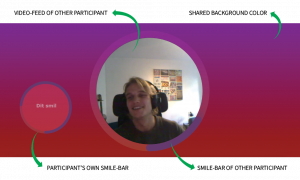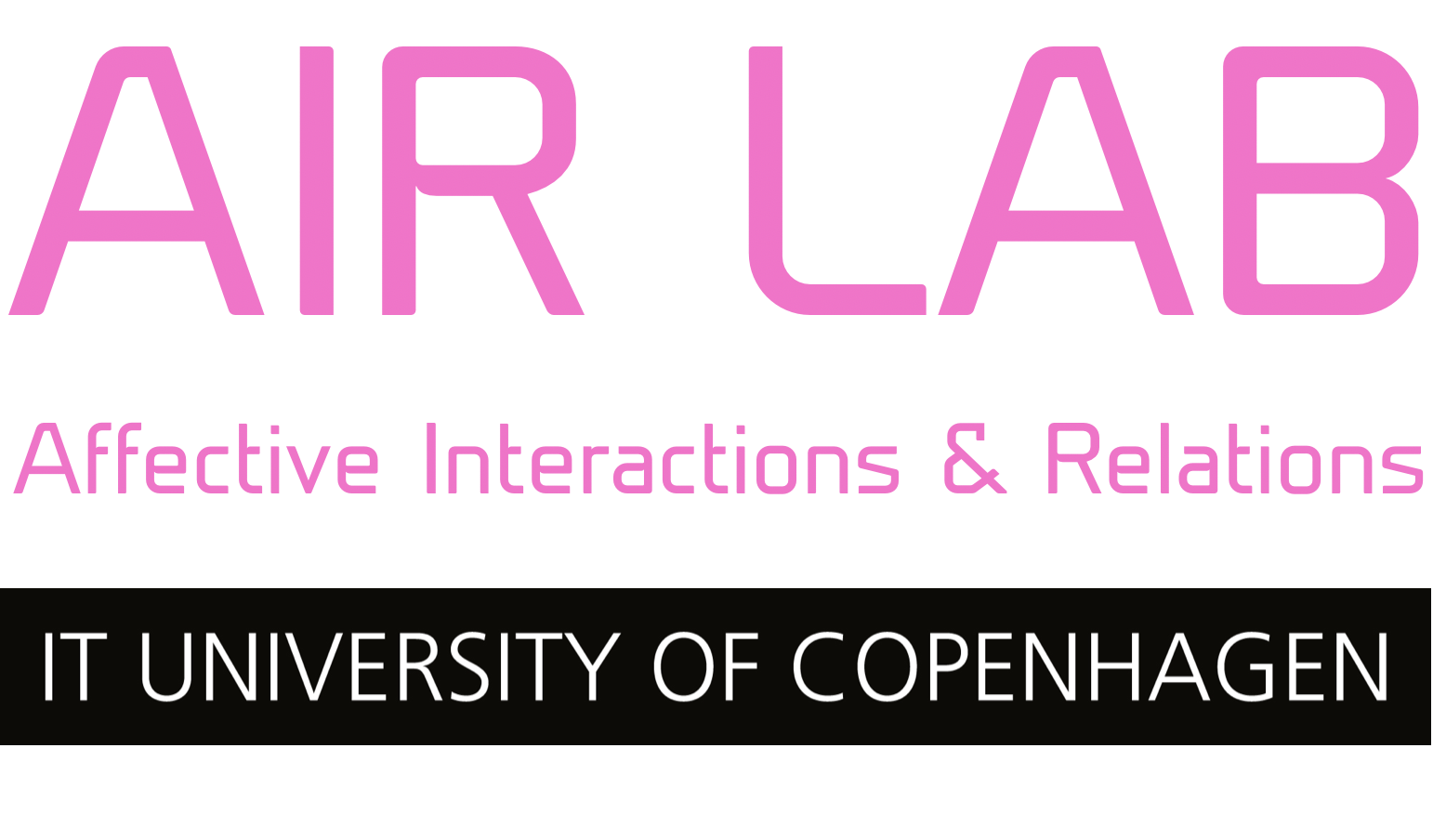Designing for shared experiences in Affective Computing
This thesis explores the proposed concept of a Collective affective loop. The Collective affective loop aims to reinforce a mutual emotion within both its users, and increase the engagement in the social experience.
A prototype was built in the social context of a blind date. This social context was chosen for its specific set of expectations, culture and rules. We anticipated that participants were more likely to express a smile in this social context, as it would be perceived as a positive gesture.
Through the applied technology of Facial Expression Recognition (FER), the system tracked both participants’ facial expressions, and purposely only interpreted the happy gestures they were expressing. This interpretation was represented as both a background color that faded from black to bright pink according to how much the participants smiled collectively, as well as a “smile-bar” displaying an individual “smile-level” of how much each participant currently smiled. This way, participants were interacting with both each other and the system.
Thus, they were able to control both the background color and the smile-bars with their facial expressions, as well as see and hear each other through a video-feed in the middle of the screen.
The research contributes by proposing design strategies for shared experiences within the field of Affective Computing.


PROJECT MEMBERS
Leonora Bryndum
Simon Arendal
